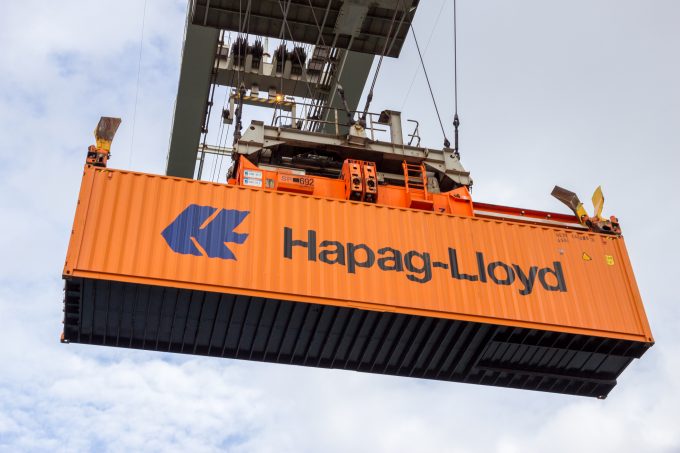Zemba gets things moving, as Hapag-Lloyd signs up for 'greener' shipping
Proving to be more than just idle talk, the Zero-Emission Maritime Buyers’ Alliance (Zemba) has ...

Sophisticated container tracking solutions will allow insurers to bring the benefits of automotive ‘black boxes’ to the maritime market, allocating risk more accurately and rewarding safe operators.
Insurers must make complex risk calculations when costing coverage for ships and their cargo. Premiums are based on a wide range of factors including vessel type, age and condition as well as voyage plan and cargo carried.
How the voyage is carried out has a huge influence, as does the exact route and condition of the vessel along the way. With limited visibility during the voyage, it can be challenging for insurers to accurately reflect the value of safe ship operations and good cargo practice in their premiums or to assign liability when claims are made.
Modern container tracking technology has the potential to cast new light on many of the factors affecting premiums and claims that have until now remained unseen. The ability to track containers has evolved from simple use of vessel location data to complete asset tracking functionality.
When containers are damaged – for example by an intrusion or impact – a full range of sensors means the damage can be flagged and assessed immediately, potentially saving the cargo inside and safeguarding other cargo onboard.
A full sensor suite also makes tracing the root cause of the incident easier. As well as showing location, operators can see when doors were opened, what ambient temperatures were in the container and whether any shock impacts were measured.
Placing liability correctly becomes less onerous than conventional resource-heavy insurance claims and is supported by operators’ capability to perform intermediate checks on containers remotely, meaning more frequent checks without additional burden on ship crews. Ultimately, monitoring for exceptions onboard and inland can be automated so that human intervention is only necessary after an alert is received from a smart container.
Mutual benefits
Greater connectivity is changing the way the sector thinks about insurance. The automotive industry is a forerunner in this area. Car insurers have already developed a solution to better spread the cost of risk between safe and dangerous drivers; the ‘black box’.
Combining location tracking and telemetry that can track speed and direction, these onboard devices transmit easily accessible information on how safely drivers are using their vehicles. Dangerous drivers that exceed speed limits, brake too hard, turn corners wildly or exceed mileage quotas can be allocated extra charges on their agreed premium.
The benefits of applying similar principles to container handling and transportation are clear. Advanced cargo tracking makes assessing claims far simpler and less costly than the extensive investigations that are needed today. The number of people needed to manage the insurance process is reduced as data can be gathered automatically if claims need to be ratified.
Further, the interaction between insurer and ship operator is simplified as there is no need for the client to report breaches, which can also be reported automatically. This should translate into lower premiums for those operators that demonstrate best practice when caring for their container assets.
The technology to apply this solution in shipping already exists. While some may argue that it will be difficult to get ship owners to buy into solutions that rely on data transparency, the fact of the matter is that the market for such solutions also exists already.
In April, Hapag-Lloyd became the first liner shipping company to adopt Orbcomm and Nexxiot’s new dry container telematics solutions as part of line’s ground-breaking initiative to make its entire container fleet “smart”.
Hapag-Lloyd’s requirements for a future-proofing technology that ensures compliance with certified-safe maritime industry standards, reporting longevity, update flexibility and easy installation were met by both Orbcomm and Nexxiot.
These solutions transmit real-time location and status over cellular connections to the Hapag-Lloyd LIVE platform, providing the operators and its customers with real time visibility of their shipments and deep data insights to make more informed decisions about their operations. From this application, it is only a small step to see how this information can be harnessed to improve visibility for insurers.
A fit-for-purpose solution
It would be remiss to talk about market readiness to use such devices without talking about costs, value and reliable data gathering, which have been the primary hurdles to adoption of container monitoring in the dry sector (unlike the refrigerated cargo sector where data-led monitoring is more commonplace).
The latest sensor solutions offer advanced connectivity and power technologies that are cost-effective and easy-to-apply. Monthly premiums can be as low as a single-digit figure per container, make these solutions extremely affordable to shipping fleets of all sizes.
As a result, insurance providers can recommend use of this type of solution without worrying about placing a financial burden on ship operators.
Installation on a container takes less than a minute, while solar charging capability and intelligent power management means the equipment can last up to ten years in service.
A solid build, designed to ATEX explosion proof standards, ensures that the devices will remain reliable across that lifecycle.
I firmly believe that container monitoring solutions will be in use across the majority of the global fleet in the next three-five years.
The data generated by these deployments should underpin insurance assessments by underwriters. After all, it is only fair that we encourage best behaviour by rewarding those that put in the effort and identify those that must improve standards if they wish to remain competitive.
Comment on this article